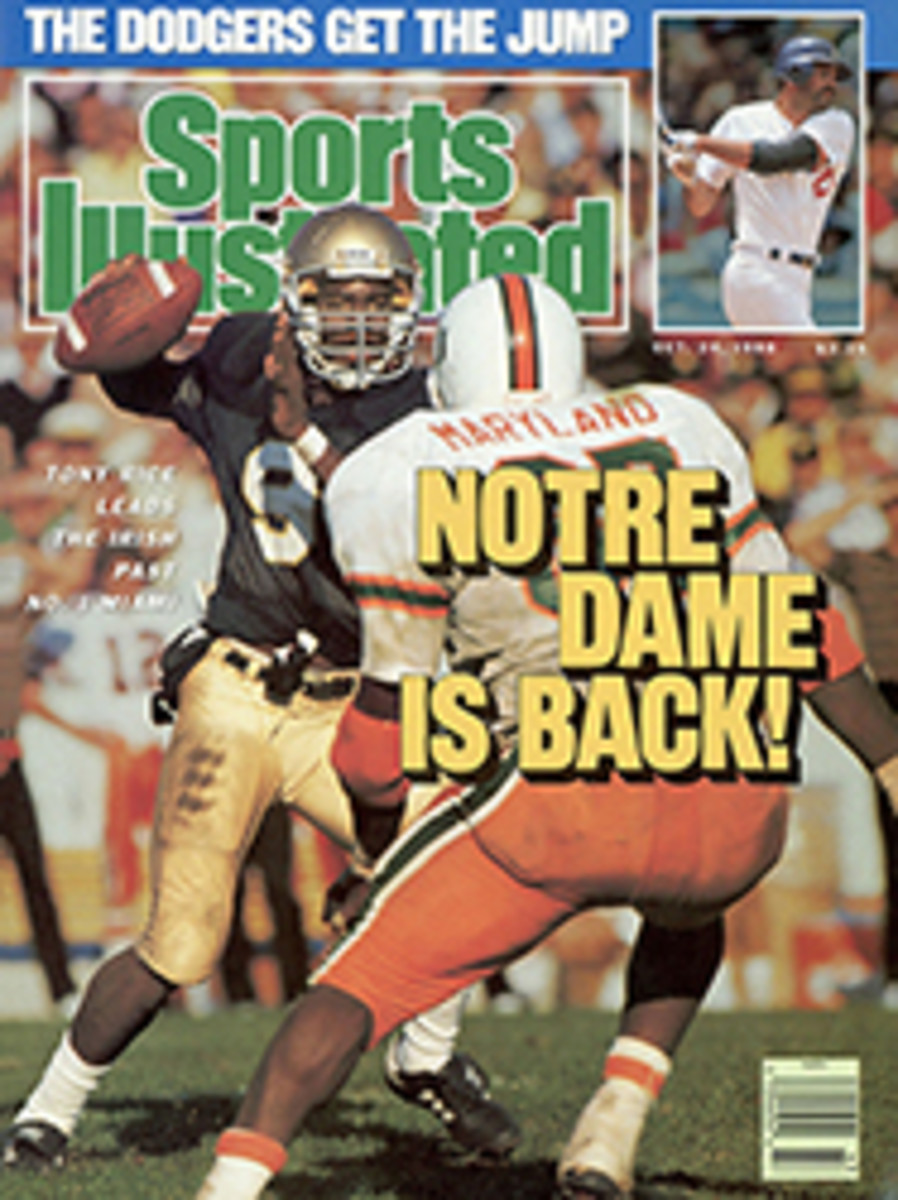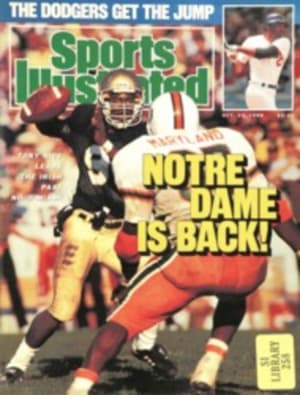
A PERIL FOR ATHLETES
I didn't think there was anything left in the world of sports that could shock me, but Tommy Chaikin has shocked me. If you haven't read his story about the horrors of steroid abuse, which begins on page 82, you should, because I'd like to talk about this unusual young man.
Tommy and I spent a lot of time together setting his narrative in order, and I think I can say that we have become friends. Indeed, it seemed to both of us that we had known each other for years rather than weeks. That's because we both played football and have common memories of this wonderful, formative, yet terrifying sport.
But I never took anabolic steroids—I never saw steroids or knew anybody who took them during my sports career—and that sets Tommy and me apart. Mostly it shows the difference in our ages. I am 39, Tommy is 24. As a young man I saw the drug age sprout and send out tentative shoots; Tommy and his peers have grown up entangled in the whole sprawling, thorny mess.
Sometimes as he was telling me his story, I would stop him and say, "I can't believe that." But I knew that he was telling the truth; it was only that I needed time to absorb the impact of what he was saying—that college football, a product of our temples of learning, is riddled with drug-abusing athletes and manipulative, see-no-evil coaches. Of course, as a reporter I had been in too many locker rooms not to have caught the subtle stink of big-time sports—but having Tommy lay it all out was like hearing from your doctor that the lump you have been ignoring is, indeed, cancer.
Tommy told his story with great ambivalence. He appreciated being able to purge himself before someone who was empathetic, but he hated having to recite his own failings. When I gave him the manuscript of his story to review, he almost broke down as he labored through it. Sweat poured from him as though he were running grass drills in the South Carolina heat. Trust him when he says he's not doing this for self-promotion.
We should be grateful that he's doing it, whatever his motivation. The physical dangers of steroid abuse have been well documented, but Tommy explains graphically that the psychological impact of the drugs may be more devastating than the havoc they can wreak on the body.
The effects of those synthetic hormones on the brain are not well known. In an article that appeared in the April 1988 American Journal of Psychiatry on the psychotic symptoms associated with anabolic steroid use. psychiatrists Harrison Pope and David Katz wrote, "Major psychiatric symptoms [manic behavior, depression, paranoia, visual and auditory hallucinations, grandiose delusions] may be a common adverse effect of these drugs."
Pope and Katz recounted horror stories of athletes who became deranged from steroid use, but then added that psychological damage "cannot easily be studied in the laboratory or clinic. Only by observing the effects of these drugs in natural settings, in the doses and combinations actually used by athletes, are we likely to better understand them."
Tommy offers us just such an opportunity. The scariest aspect of his story is that it underlines the fact that in the U.S. anabolic steroids are improperly used by an astonishing number of people, most of them male, most of them young. The July 1988 issue of The Physician and Sportsmedicine published estimates of the number of steroid-abusing males in America; even from "conservative extrapolations," the number ran into the hundreds of thousands. Bob Goldman, the director of the High Technology Fitness Research Institute of the Chicago College of Osteopathic Medicine and perhaps this country's foremost authority on steroid abuse, says that there are a million steroid users in the U.S., "one in every 250 people."
Who uses steroids? Not just athletes. Not just Ben Johnson or Angel Myers or Bulgarian weightlifters. In a survey of anabolic steroid use at a Florida high school in 1986, the school newspaper discovered that 18% of the male students used steroids and that almost half of this group cited "appearance" as the main reason for taking the drugs.
"You should see cops on steroids," says Goldman. "There are places where a lot of them use steroids. They'll pull people through windshields for running a red light."
How far does this craziness go? Nobody knows for sure. But as Tommy Chaikin points out, steroids are custom-made for football players: They give you size and aggressiveness, and how many times have we heard coaches sing the praises of those attributes? Never mind that the same stuff that makes you big and mean can make you crazy or even kill you—we're talking football here.
Coaches, administrators, parents, athletes: Are you listening? Or is Tommy Chaikin telling his story in vain?
PHOTO
BUCK MILLER

